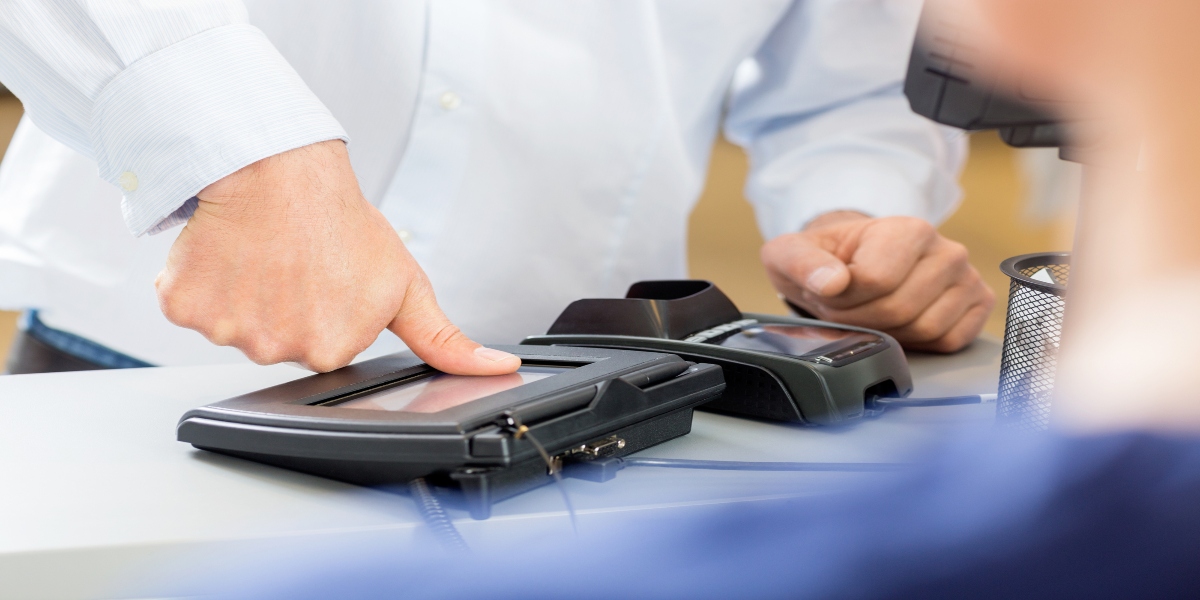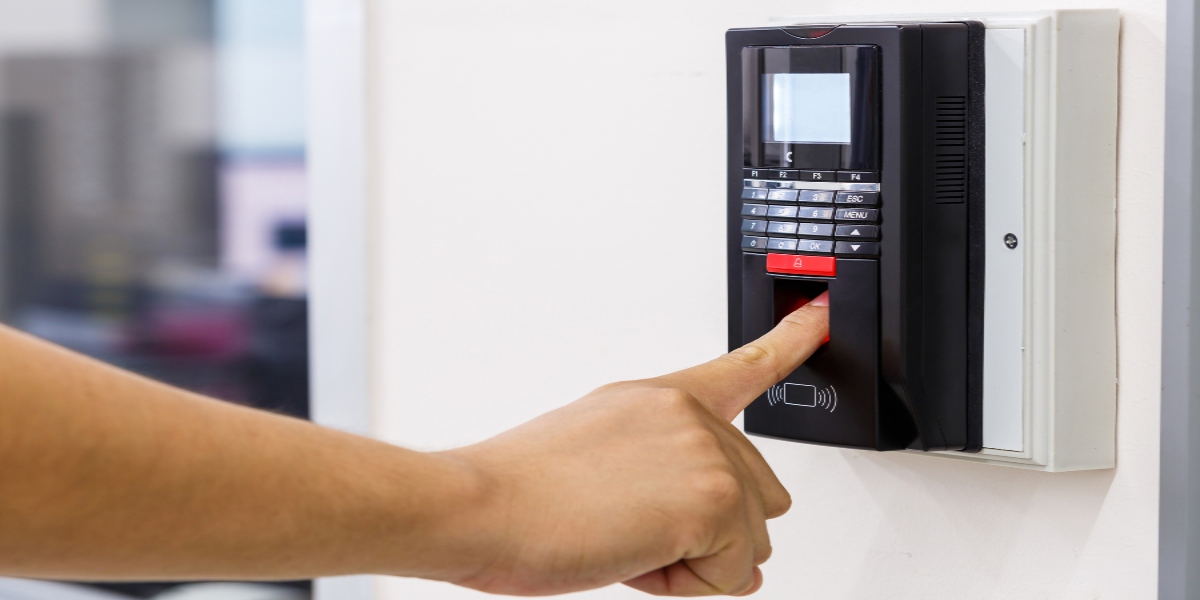A biometric payment is much simpler than sounds.
Essentially, it is a point-of-sale technology that uses an individual’s physical characteristics - like their fingerprint or face - to confirm payments. It is usually done through a smart device that supports biometrics.
Biometric payment offers greater security for withdrawing funds from your bank account, or for approving purchases.
Some companies have trialled biometric approval for card payments, rather than the traditional chip and PIN payment method.
The success of these trials could mean some exciting new innovations for payment options and purchase security in the future - read on to find out more about notable companies that offer biometric payment options, how widely they are used, and whether we think it’ll be something SMEs need to think about in the near future.

How do biometric payments work?
Biometrics rely on physical traits that are unique to the individual. This is most commonly things like your fingerprint, retina, voice, and your face.
Biometric scanner systems record your physical trait (for example, it’ll ask you to press your finger on the scanner) and keep it in a data file.
When you try to gain access to the system behind biometric security, like when you unlock your phone or make a payment, the scanner analyses your physical trait with the one it has previously stored on file.
If they match, you’re granted access. If not, it doesn’t. Simple!
Sometimes, there are errors in matching your fingerprint, etc with the data stored on file. If you have wet hands or there is something on the scanner, for example, it might not be able to validate the input information.
Are biometric payments safe?
Biometric payment is said to be 99.99% accurate in terms of fingerprint authenticity, making this method almost completely flawless and therefore, very safe.
There was speculation and apprehension in the beginning as to the security of storing such sensitive information on a mobile device, but with many phones designed with biometric encryption as well, the information for both banking and the physical characteristics used for biometric payments are safely stored through even more biometrics.
What are the benefits of biometric payments?
There are loads of benefits to biometric payments in comparison to other card not present payment methods. We’ll outline just a few main ones here:
- It can be used as an additional layer of security (on top of passwords or PINs) to important data.
- Ordinary keycards and passwords can be lost/forgotten, whereas biometric data is also readily available.
- Biometric data cannot be easily forged/mimicked.
- Number pads on traditional keycards can be faded where you type, so fraudsters can guess your password based on the rubbed off symbols.

Are biometric payments widely used?
It’s thought that more than half of smartphones in circulation offer biometric payment facilities, and this is estimated to increase to around 98% of mobile devices by 2022.
According to Visa data, 70% of consumers found biometric payments were an easier way to pay. With almost all major supermarkets and online retailers offering some form of biometric payment option at the checkout, it’s fair to say that the demand for this technology is high.
Building on from the quick ‘tap and go’ contactless transactions, biometric payments have helped to add another layer of security to these easy purchases without any intrusive and lengthy extra steps.
It can be considered an improvement on basic contactless payments as it has all the features of a contactless purchase but it’s safer. Now that the £30 limit for contactless payments has been increased to £100, biometric authentication offers more security than ever if someone was to ever unlawfully try to use your card or device to perform a transaction.
Do SMEs need to consider it in the near future?
If you’re an SME, you don’t need to rush off to offer biometric payment facilities as soon as you’re done reading this article, but it’s definitely worth considering in the future.
By enabling biometric payment options in your current POS system, or for your e-commerce store, you’ll extend the variety of different payment methods available to your customers.
This has the benefit of:
- Offering increased online payment security, which protects yourself and your clients Adding a faster and safer method of purchase protects against fraudulent card use or unlawful purchases.
- Reducing waiting/queueing times so you can offer Gold star service to everyone you meet.
- Speeding up and simplifying checkout methods by removing the need to type out card details for each purchase. This capitalises on the 40% of online purchases which are considered “impulsive”.
It is important to remember however, particularly in physical stores, that to make the most out of your new biometric payment system, you must have a strong and stable internet connection so that your investment isn’t all for nought.
Without a good signal, you won’t be able to make the most out of your new payment option, so that’s definitely something to consider before diving in head first.
Conclusion
If you’re just wrapping your head around different payment options and prices for your SME, CardSwitcher is here to help.
You can compare credit card processing plans with us and save up to 40% on your current monthly bill!


